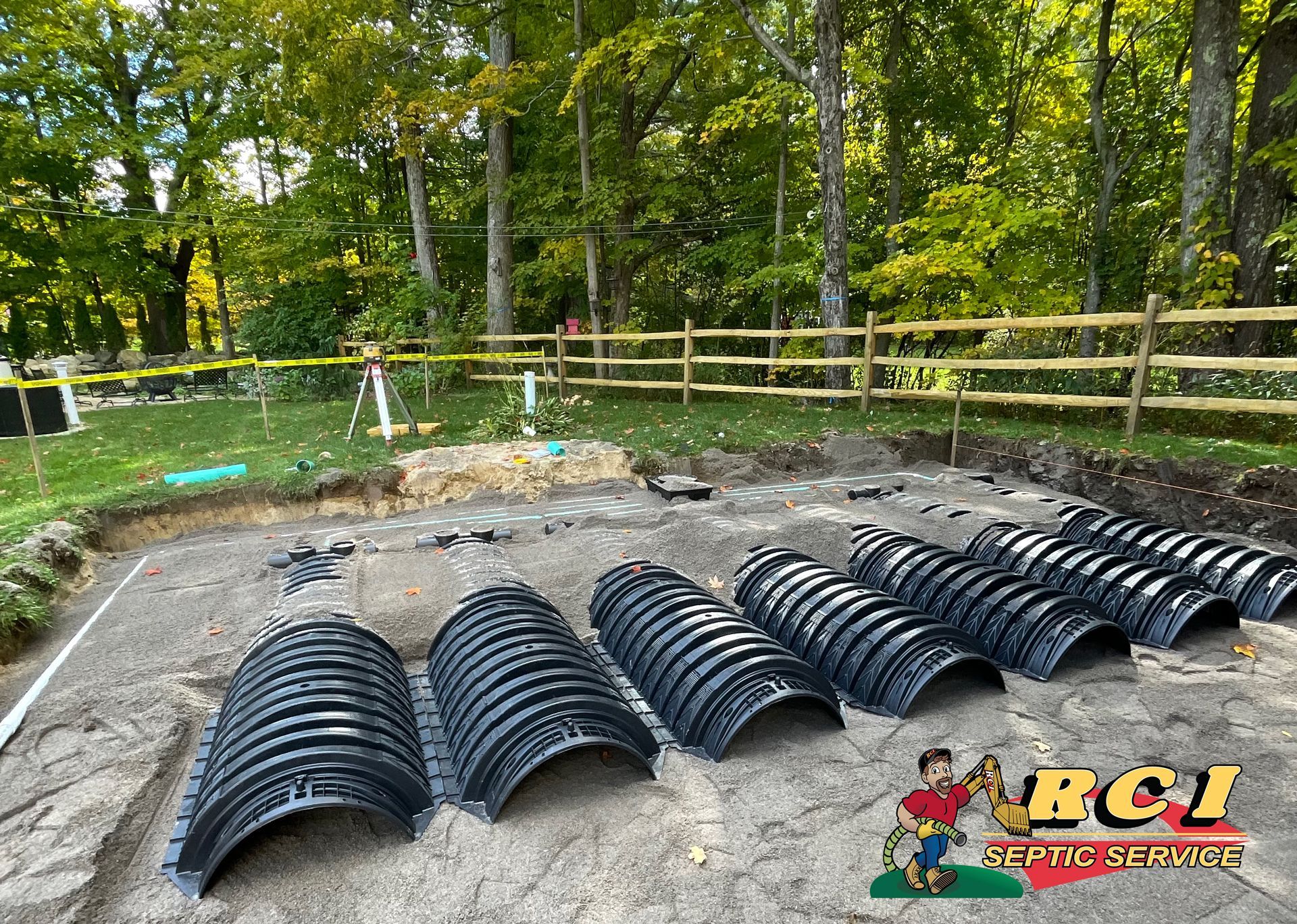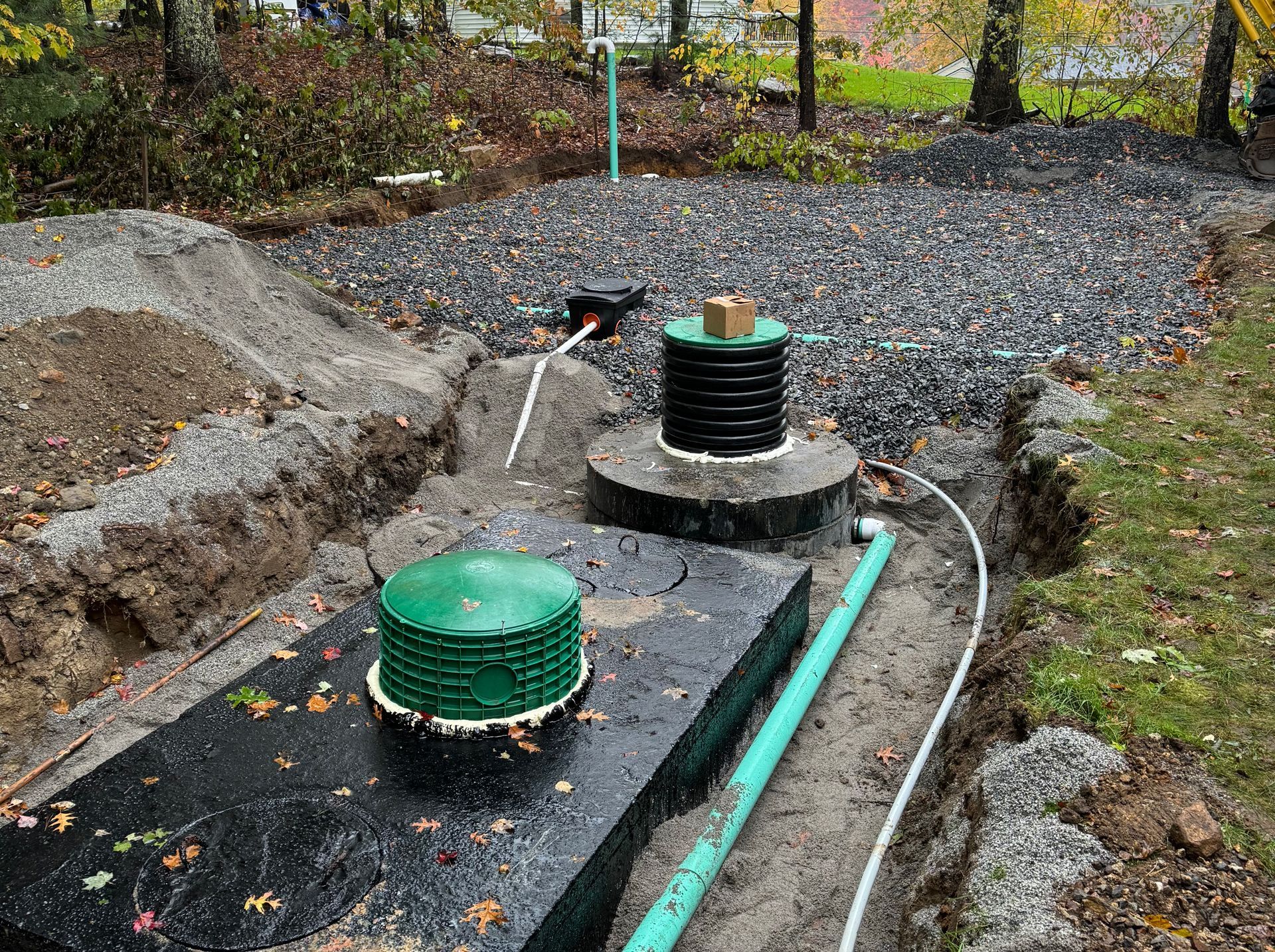Can a Septic System Be Installed in the Winter? Tips & Considerations
Yes, you can install a septic system in the winter. However, challenges like frozen ground and cold weather mean that careful planning and professional help are essential. This article explains what to expect and how to handle these obstacles, including whether or not a septic system can a septic system be installed in the winter.
Key Takeaways
- Winter installations of septic systems are feasible but require specialized techniques to address challenges such as frozen ground and potential pipe damage.
- Proper planning, including the use of insulated forms, efficient scheduling, and professional assistance, is critical for successful septic system installations in winter conditions.
- Despite challenges, winter offers advantages such as quicker contractor availability and reduced landscaping damage, making it a viable time for septic installations.
Understanding Winter Septic System Installation
Yes, it is possible to install a septic system during the winter months. While winter sets a scene of snowy landscapes and freezing conditions, it doesn’t have to halt essential home projects like septic system installations. However, grasping the nuances of such installations is essential. Freezing, clogging, and damage to pipes are common winter issues that can affect septic systems, and ground conditions such as frozen or saturated soil can delay the installation of septic systems.
Experience is key when navigating these challenges. Hiring a professional ensures that specialized equipment and knowledge are utilized, effectively handling the harsh conditions winter brings. Septic systems can be tank pumped in winter if trucks can access the tank, but proper site preparation and installation techniques remain key.
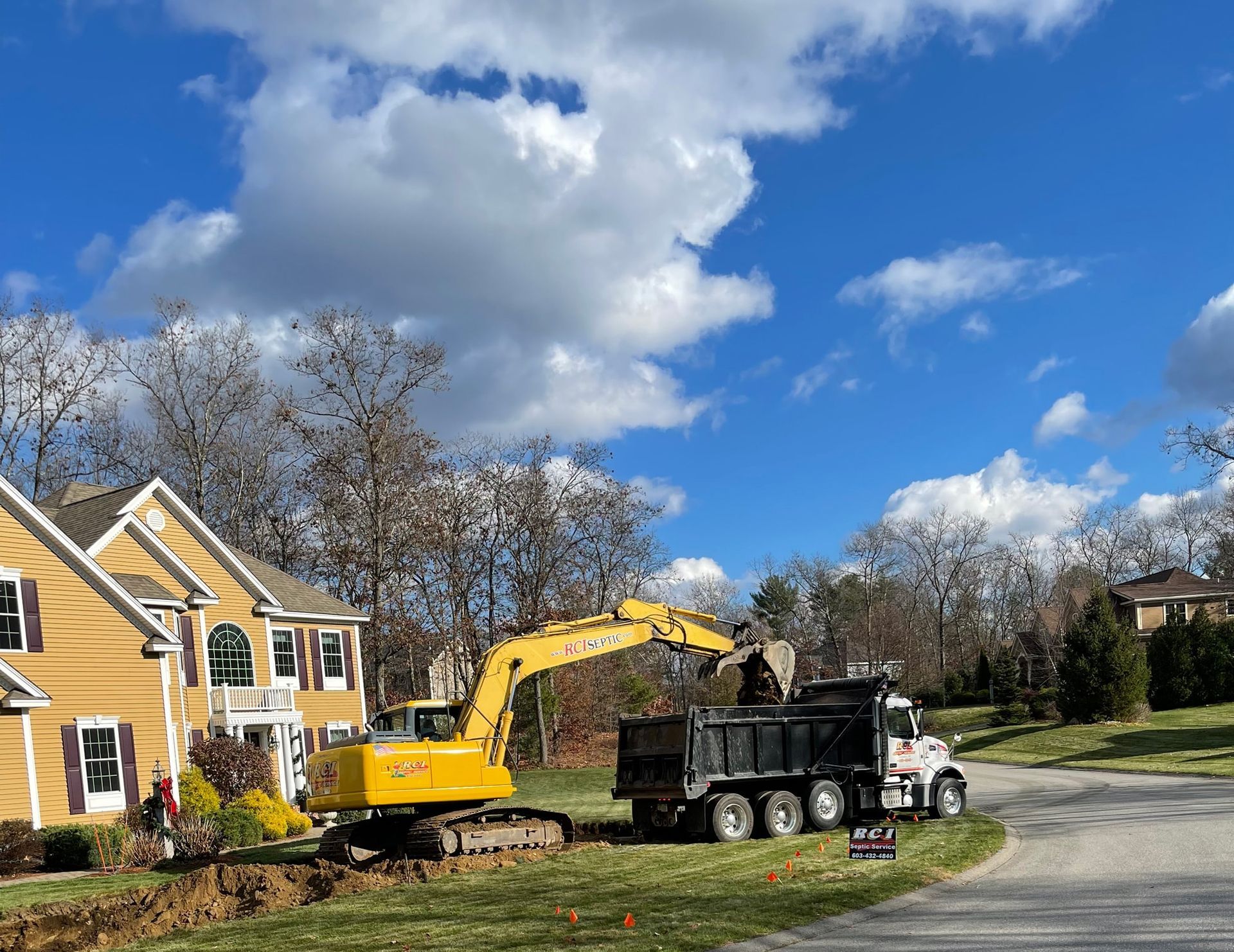
Challenges of Installing Septic Systems in Winter
Installing septic systems during the winter months comes with its own set of challenges. The cold weather can freeze septic tanks and main pipelines, depending on the frost depth, which complicates the process significantly. Snow and its compaction can affect the insulation of the soil, leading to additional difficulties. Burst pipes are a common issue, primarily caused by freezing and expanding water.
If a septic tank is filled to capacity during winter, effluent could back up and potentially lead to a burst pipe if the contents freeze. Moreover, access to the installation site becomes challenging due to snow or ice coverage, often leading to increased costs. The expertise required to navigate these issues emphasizes the importance of professional help.
Dealing with Frozen Ground
Frozen ground is one of the most significant obstacles when installing a septic system in cold climates. The ground conditions during winter months require advanced techniques and best practices to mitigate risks. Ground thawing machines are often necessary to effectively deal with frozen soil during the installation process.
Effectively handling frozen ground is vital for a successful installation. These machines help break through the ice barrier, allowing the installation to proceed smoothly. Without such measures, the frozen ground can cause delays and even halt the installation altogether.
Managing Frost Heave
Frost heave poses another considerable challenge during winter septic system installations. This phenomenon can cause structural damage to concrete septic systems if not properly managed. Frost heave can lead to uneven settling and cracks, compromising the integrity of the system.
Heated enclosures, insulated forms, and heated curing blankets help combat frost heave. These methods help maintain the necessary conditions for concrete curing and prevent the system from being compromised by the effects of frost heave.
Advantages of Winter Septic System Installation
While winter sets the stage for many challenges, it also offers unique advantages for septic system installations. One significant benefit is faster scheduling, as contractors typically have more availability during the colder months. This means you won’t have to wait as long to get your project started and completed.
Another advantage is the minimized likelihood of damaging landscaping. Most vegetation is dormant during winter, so there’s less risk of harming your lawn or garden during the installation process. These cumulative benefits make winter an opportune time for septic system installation.
Essential Steps for Winter Installation
Successfully installing a septic system in winter requires careful planning and execution. Proper site preparation, insulated forms and enclosures, and efficient scheduling are critical steps for a smooth process. Each of these steps addresses specific challenges posed by winter conditions.
A well-thought-out plan includes clearing snow, ensuring machinery access, and scheduling around extreme cold periods. These steps prevent freezing conditions from disrupting the installation and ensure timely completion.
Proper Site Preparation
Proper site preparation is key for successful winter installation. Clearing snow from the installation area ensures safe and efficient access. Ensuring that heavy machinery can access the site without obstruction is also vital. This step allows for the transportation of materials and equipment required for the installation.
Engaging professionals for winter septic installation enhances site preparation efforts. They ensure adherence to regulations and effectively handle adverse weather conditions.
Using Insulated Forms and Enclosures
Insulated forms and heated enclosures are vital for managing winter installation challenges. Cold temperatures can slow the curing process of materials like concrete, impacting performance. Heated enclosures help maintain optimal temperatures, ensuring that the curing process proceeds as required.
Proper curing conditions enhance concrete strength and protect pipes from freezing, ensuring the septic system’s longevity and reliability.
Scheduling Efficiently
Efficient scheduling is vital for winter septic system installation. Planning during milder weather conditions helps avoid delays and protect equipment. This approach ensures that the project is completed on time and without unnecessary complications.
Proper site preparation, including clearing snow cover and providing machine access, is essential for effective scheduling. By avoiding periods of extreme cold, installers can work in more manageable conditions, leading to a smoother installation process.
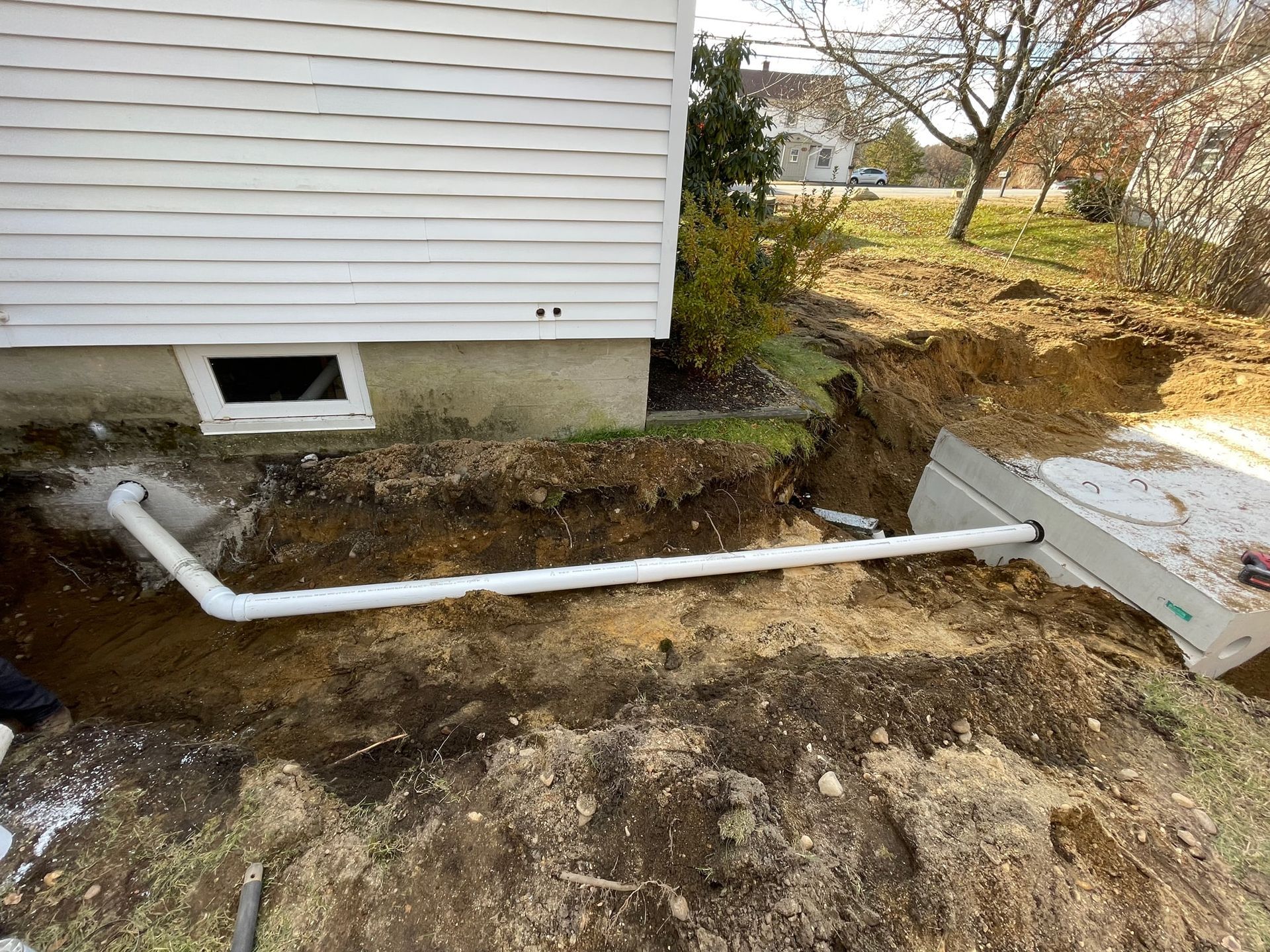
Preventative Measures Post-Installation
After the installation of a septic system during the winter months, taking preventative measures is crucial to ensure its longevity and functionality. Placing septic tanks and pipes below the frost line reduces freezing risks. Proper insulation of septic components also mitigates these risks.
Layering mulch, hay, or leaves at least eight inches thick provides natural insulation over the septic area. Regular maintenance, such as maintaining an active septic system, can prevent blockages and reduce the likelihood of freezing.
Professional vs. DIY Winter Septic Installation
Choosing between professional and DIY winter septic system installation involves weighing the pros and cons of each approach. DIY installations in winter can save costs but require meticulous planning and execution. Homeowners can manage the project timeline and potentially save on labor costs.
Improper techniques in cold weather can cause complications and long-term issues, making DIY risky in extreme conditions. Comparatively, hiring a professional can mitigate these risks, ensuring the installation meets all regulations and is less prone to failures.
When to Hire a Professional
In extreme cold conditions, professional assistance is vital to navigate the complexities of frozen ground during septic installation. When the ground is frozen and site conditions are challenging, hiring a professional is often necessary to ensure proper installation.
RCI Septic Service prioritizes the safety and effectiveness of septic system installations in cold temperatures, ensuring that the job is done right the first time.
Safe Practices for DIY Installations
For those considering a DIY approach, safe practices are essential. Wearing appropriate protective gear is essential for safety when working on septic systems, especially in cold weather. Avoid entering septic tanks, as the toxic gases present can be lethal.
DIY installers should check the frost line and plan their installation accordingly to avoid pipe freezing. DIY thawing of a frozen septic system is risky and can worsen backflow or cause gas explosions.
Common Mistakes to Avoid During Winter Installations
Common mistakes during winter installations can lead to significant issues. Compacted soil above the septic system can freeze more easily, so avoid compacting it. Cutting the grass over a septic system before winter can hinder insulation; it’s better to leave it longer for warmth.
Leaving a small continuous flow of water from a faucet can help keep the system active during harsh winter conditions, potentially leading to fewer issues. Hiring a local plumber can prevent costly mistakes during winter installations caused by frozen ground or extreme temperatures, especially when dealing with leaky faucets.
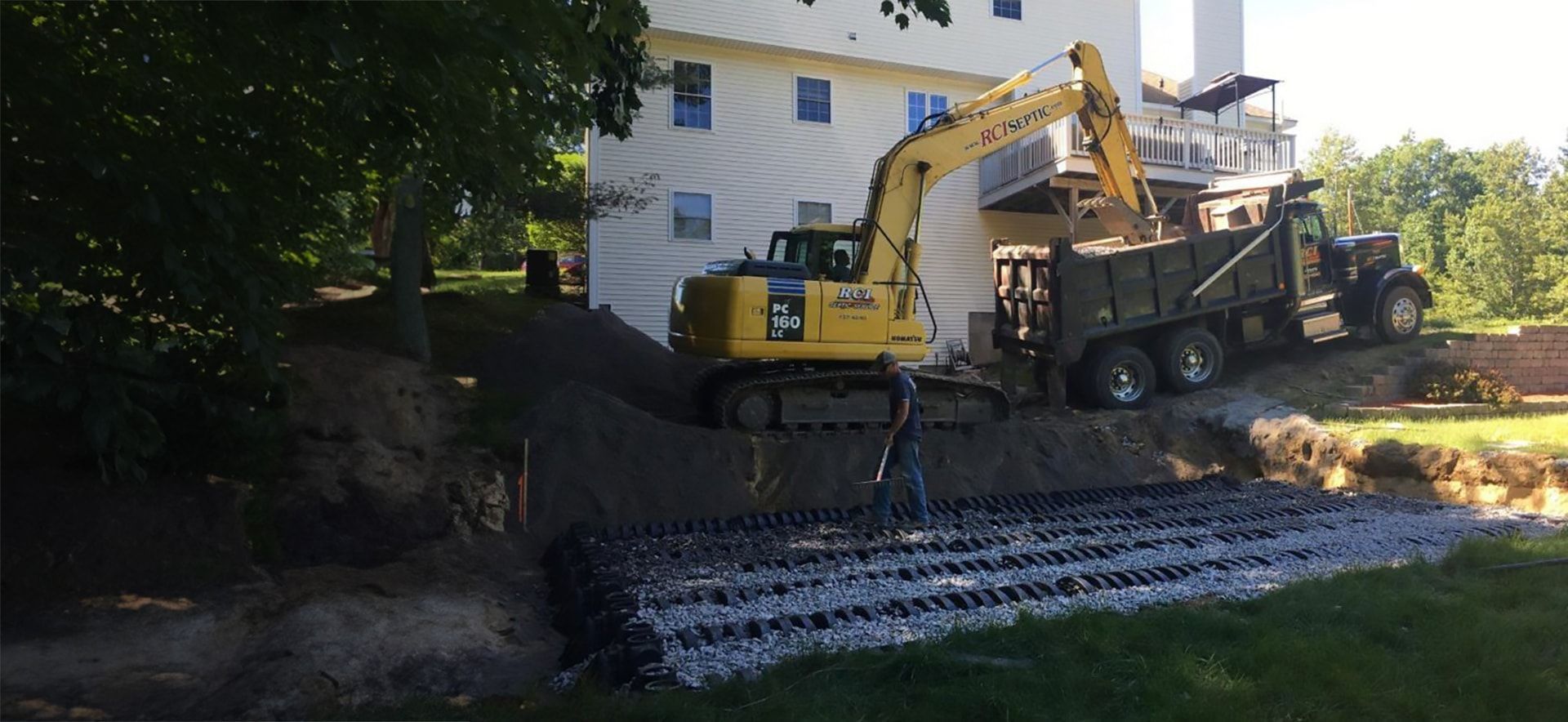
Why Choose RCI Septic Service for Winter Installations
RCI Septic Service employs trained professionals with specialized tools to handle the unique demands of winter installations. Their commitment to customer satisfaction is evident in their tailored solutions for winter installation challenges.
Located in Londonderry, New Hampshire, RCI Septic Service focuses on efficient, eco-friendly solutions for septic system installations. Their expertise and dedication make them a reliable choice for winter septic system installations.
Summary
Winter septic system installations, while challenging, are entirely feasible with the right planning and expertise. Understanding the unique challenges, such as dealing with frozen ground and managing frost heave, is crucial. The advantages, including faster scheduling and minimal landscaping damage, make winter a viable option for septic system installations.
By following essential steps for proper installation and considering professional help when necessary, homeowners can ensure a successful and long-lasting septic system. Whether you choose a DIY approach or hire professionals like RCI Septic Service, being prepared will lead to a smoother installation process.
Frequently Asked Questions
Can a septic system be installed in the winter?
Yes, septic systems can indeed be installed in winter, but it necessitates meticulous planning to overcome challenges such as frozen ground and frost heave.
What are the benefits of installing a septic system in winter?
Installing a septic system in winter allows for faster scheduling with contractors and reduces the risk of landscaping damage because vegetation is dormant. This can result in a more efficient installation process.
What preventative measures should be taken post-installation?
To prevent freezing post-installation, it is essential to insulate septic components, maintain snow cover, and conduct regular maintenance. Taking these measures will help ensure the system operates effectively throughout colder months.
When should I hire a professional for winter septic installation?
Hiring a professional for winter septic installation is essential when dealing with extreme cold or frozen ground to ensure proper installation and prevent long-term issues. It is advisable to seek expert assistance under these challenging conditions.
What are common mistakes to avoid during winter septic installations?
It is crucial to avoid compaction of soil above the septic system, over-trimming grass, and miscalculating system capacity during peak water use. These mistakes can lead to significant operational issues and system failure.

